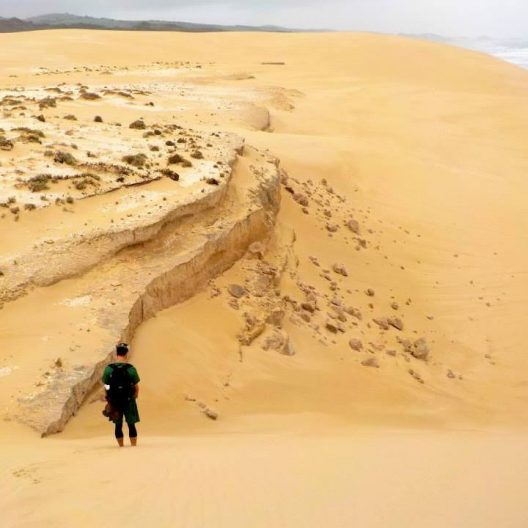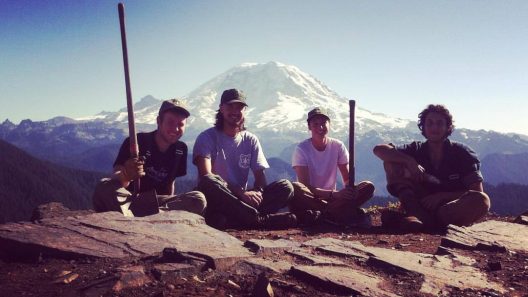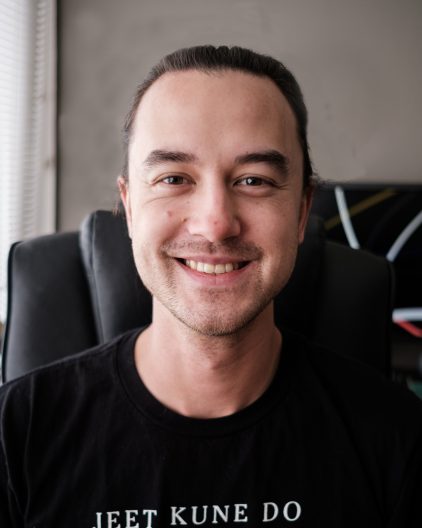Q&A with Robinson Low
Describe your experience in applying to and selecting a graduate program.
I first applied to SEFS and SAFS without success. Although, I will say I didn’t apply myself very well and I’m not sure I was mentally ready to go back to school. I graduated undergrad in 2015 and took a few years off working before diving back into the academic world. I really struggled with feeling inadequate while applying for school, knowing there are people who knew exactly what they were looking for and already had connections with professors in the graduate programs they were applying for. By the time I found and applied for SMEA I felt mentally ready and sure of myself going into a graduate program.

How did SMEA first come across your radar? What were your impressions of the program?
A few years before finding out about SMEA I had applied to SEFS and SAFS at UW without success. I didn’t feel invested with those programs and because of that I don’t think I truly applied myself well when sending in my application. After working for a couple years I felt ready to look for schools again and immediately stumbled across SMEA and was shocked I didn’t find it when looking for programs years prior. My undergraduate program was similarly interdisciplinary with aspects of policy and environmental ethics so SMEA seemed like the perfect fit.
Why did you decide to come to UW’s SMEA for graduate school?
A major reason I chose to come to SMEA was that it was the only program I applied for that year, so if I was accepted then I knew that’s where I’d be going come the following Fall. I was also drawn in by the curriculum, particularly the choice of thesis, capstone, and courses-only and the broad range of classes that are required. Another driving factor is that Seattle has been my home for essentially my entire life. I’ve always wanted to go to UW, to learn more about the history of Seattle, and potentially contribute to and give back to the city that I was raised in.

Tell us about your Capstone Project.
For my capstone I’m working with fellow SMEA student Darby Swayne on a project surrounding storm water solutions and management practices in the greater Seattle area. We are working with Dr. Phil Levin, The Nature Conservancy of Washington, and Puget Sound Partnership. We interviewed 20 professionals in the stormwater management and research world asking them to sort 29 different stormwater solutions based on their own criteria in an application called a “Qsort”. This application helped us to identify different dominant discourses among our interviewees. From there we have expanded on how they ranked the solutions looking at who and what benefit from the solutions each grouping of people ranked highly. We also have been making maps of specific solutions to see how their implementation has differed across municipalities in the greater Seattle area.
What has been your favorite class at UW so far? Why?
This is a tough question because I’ve enjoyed so many classes here at UW! I’d say within SMEA my favorite class was Dr. Ryan Kelly’s Coding in R class. I did a small amount of work with R in my undergrad work, so I always wanted to take a more in-depth course. Professor Kelly did a great job teaching students who had experience in R and those who were just learning the basics. It also showed me the true versatility of R once you get the hang of it. My favorite non-SMEA class I’ve taken was just this Fall quarter (2021). It was an Environmental Health class about urban water, wastewater, and human health. It was pertinent to my Capstone research which is why I took it, but it ended up being much more than that. Understanding sewer systems and water distribution infrastructure was fascinating and eye opening, it was amazing to me how much I didn’t know about water distribution and treatment systems here in the US.
What do you like most about SMEA?
I like all of my classmates and cohort most. We really bonded together to get through COVID last year and then getting to meet them all in person this year has been great. I love the random run-ins on campus now that we are back, and seeing who is at their desk when I walk into MAR is always a nice surprise. Because SMEA is an interdisciplinary program the cohorts of students have such diverse educational and life history backgrounds. The variety of classmates includes students who have come to SMEA straight out of undergrad, to students like me who have taken a few years off before coming back to school, to people who are changing careers. SMEA classes just always seem to have so many different perspectives adding to the curriculum, I really enjoy that.

Who is in your support network while you’re pursuing your MMA?
My parents live here in Seattle and I can’t thank them enough for everything they’ve provided me with and all the support they continue to offer. I would never be here today without their confidence in me and constantly pushing me to do whatever it is I want to do. I’m lucky to have them in my corner. I live with my girlfriend who also provides me with constant support, she can also always tell when I’m stressed over school and is always understanding when I’m swamped at the end of the quarter. I also have a couple good old friends who I went to high school and college with that I see from time to time. I don’t see them all that often because of school, but they understand and always push me to keep my head down and keep working. I feel so lucky to be surrounded by such positive and supportive people, I don’t know if I’d be able to get through grad school without them.
What is your favorite form of marine life and why?
Orca Whales have always been, and always will be my favorite from of marine life. Growing up in Seattle, I had always been exposed to images and information about them. When I was a kid, my family and I would go up to Vancouver, BC every summer, and we would always stop in at the Vancouver Aquarium so we could see the Orca and Beluga Whales. At the time I was too young to understand the problems with keeping captive cetaceans in aquariums and how they even got there in the first place. Later, when I was in 8th grade my class went camping in Deception Pass and went whale watching. We saw a family of transient Orcas teaching their calf to hunt by tossing a seal carcass through the air and slapping their tails on it. When they were done they swam directly under our boat, I didn’t fully grasp how large these animals were until I saw them clearly just under the water below our boat. Finally, in the summer before starting school my girlfriend and I took a trip to San Juan Island to do a kayak whale watching tour that ended up just being us and the tour guide. They said the chances of actually seeing Orcas was very small, but they’d try. Immediately when we got out to the Haro Strait we saw 5 large fins bobbing up and down and could clearly hear them take breaks before disappearing below the water line. I attribute my experiences with Orcas to my interest and love of the environment and marine spaces. While I may not be able to work directly with Orcas, I hope my work helping to limit contaminants from urban areas has a positive effect on them.